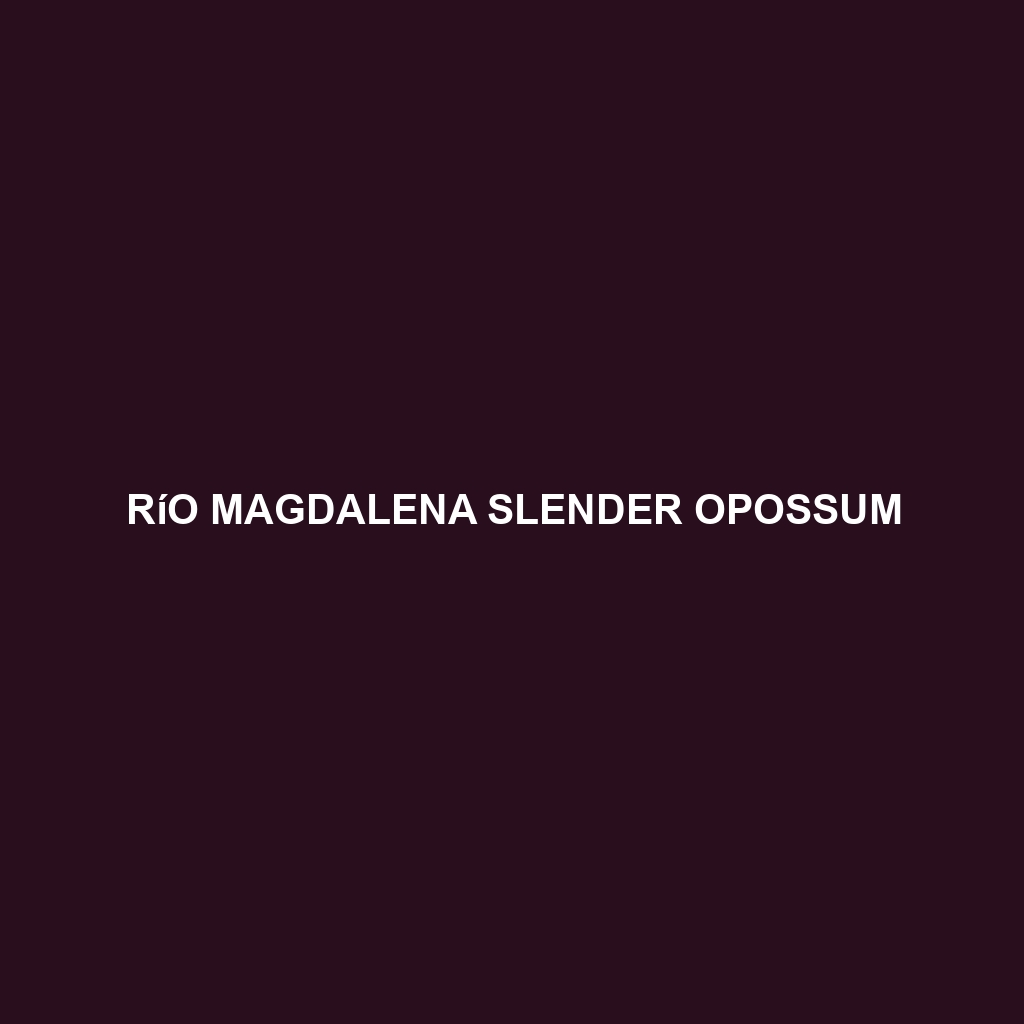Río Magdalena Slender Opossum
* *
The Río Magdalena Slender Opossum (Marmosops magdalenae) is a small, nocturnal marsupial endemic to the Magdalena River basin in Colombia. Known for its slender build and agile movements, this elusive opossum is a remarkable example of the biodiversity found in South America’s tropical forests.
*Physical Characteristics:*
Size: This opossum is relatively small, with adults typically ranging from 15 to 20 centimeters in body length, excluding the tail, which can add an additional 18 to 25 centimeters.
Coloration: The Río Magdalena Slender Opossum sports a soft, dense fur that is usually a mix of grayish-brown on the dorsal side and lighter, almost white on the ventral side. Their tails are prehensile and often exhibit a darker coloration towards the tip.
Special Features: They have large, beady eyes adapted for nocturnal vision, and their elongated snouts are equipped with keen senses of smell and touch. Their ears are relatively large and rounded, aiding in their acute sense of hearing.
*Behavior:*
Social Interactions: These opossums are generally solitary creatures, coming together only during the breeding season. They communicate through a variety of vocalizations and scent markings.
Feeding Habits: The Río Magdalena Slender Opossum is an omnivore, with a diet that includes insects, small vertebrates, fruits, and nectar. Their opportunistic feeding habits play a crucial role in seed dispersal and pest control.
Ecological Roles: As both prey and predator, they are integral to maintaining the ecological balance within their habitat. Their feeding behavior helps control insect populations and facilitates the spread of various plant species.
*Habitat:*
Geographical Range: This species is confined to the tropical and subtropical forests along the Magdalena River basin in Colombia.
Environmental Preferences: They thrive in dense, humid forests where they can find ample cover and food resources. They are adept climbers, often found in the understory and canopy layers of the forest.
*Adaptations:*
Nocturnal Lifestyle: Adapted to a nocturnal lifestyle, they have developed enhanced sensory capabilities to navigate and forage in the dark.
Prehensile Tail: Their tail acts as an additional limb, aiding in climbing and stability among the trees.
Agile Movements: Their slender bodies and nimble limbs facilitate quick and agile movement through dense vegetation.
*Conservation Status:*
Current Status: The Río Magdalena Slender Opossum is currently listed as Data Deficient by the IUCN due to a lack of comprehensive population studies. However, habitat destruction poses a significant threat to their survival.
Conservation Efforts: Preservation of their natural habitat through the establishment of protected areas and sustainable land-use practices is crucial for their continued survival.
*Fun Facts:*
Scent Marking: Like many marsupials, they have scent glands that they use for marking territory and communicating with other opossums.
Marsupial Pouch: Female Río Magdalena Slender Opossums carry their young in a marsupial pouch until they are sufficiently developed to survive outside.
Meticulous Grooming: They are known for their meticulous grooming habits, which help keep their fur clean and free of parasites.
The Río Magdalena Slender Opossum is a fascinating species that highlights the rich biodiversity of Colombia’s tropical forests. Understanding and protecting this unique marsupial can provide insights into the health and stability of its ecosystem.

